Yellow-rumped Flycatcher Ficedula zanthopygia 白眉姬鶲
Category I. Regular, although seemingly decreasing autumn migrant. There are seven spring records and a few contentious winter sightings.
IDENTIFICATION
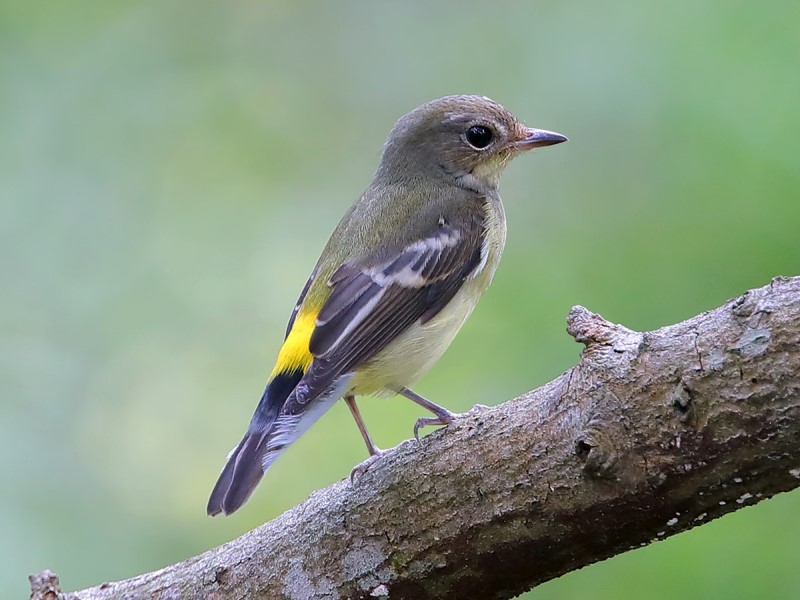
Sep. 2019, Michelle and Peter Wong. First-winter.
13–13·5 cm. Medium-sized flycatcher, most birds seen in HK are first-winters in autumn. They can be aged by the thin pale tips to the outer great coverts and the white ‘hook’ at the tip of the innermost tertials. In the field, first-winter males are generally indistinguishable from first-winter females.
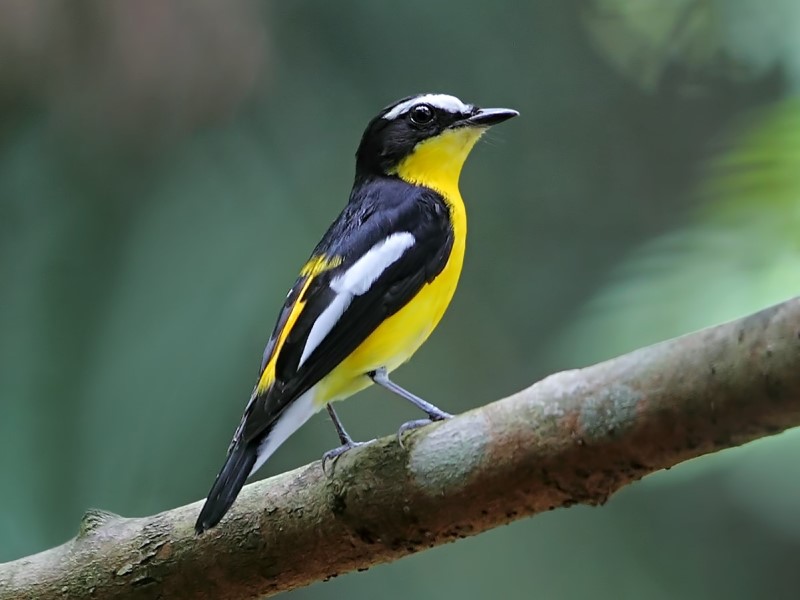
Sep. 2010, Michelle and Peter Wong. Adult male.
The adult male (scarce in HK) has a black head with a prominent white supercilium. The black nape, mantle and tail contrast with the yellow rump. The wings are black with a prominent white stripe formed by the inner greater coverts and tertials. The underparts are yellow. The white supercilium immediately distinguishes it from the male Narcissus Flycatcher.
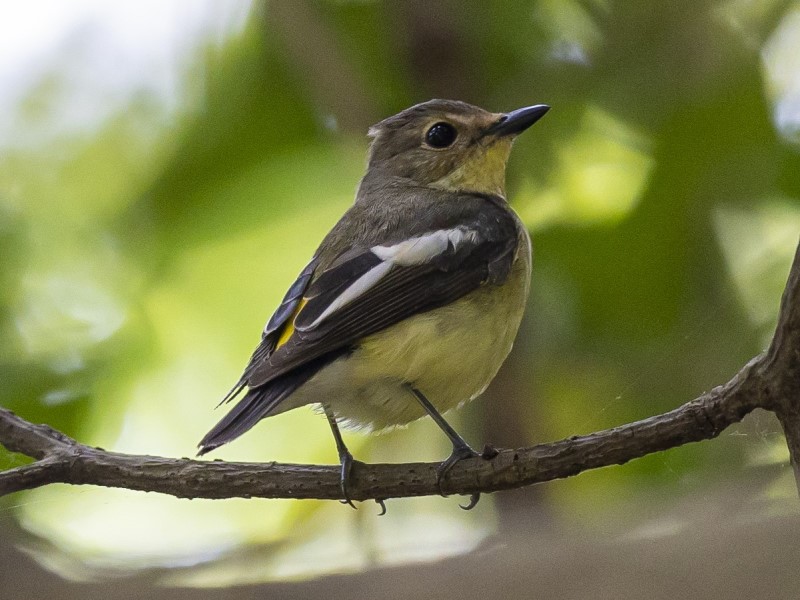
Apr. 2022, Matthew Kwan. Second calendar-year male.
Second calendar-year males in spring have the wing pattern of the adult male but have dull green head and mantle.
VOCALISATIONS
The commonly heard call from autumn migrants is a moderately high-pitched downslurred ‘weet’ often interspersed with a short rattle. Very similar to the call of Narcissus Flycatcher, the ‘weet’ note is slightly lower in pitch.
DISTRIBUTION & HABITAT PREFERENCE
Recorded at widespread localities where suitable wooded cover for migrants exists. It is regular at Mai Po and occurs annually on migration at sites such as Po Toi and Ho Man Tin.
OCCURRENCE
In autumn, when mainly first-winter birds are seen, it has been recorded between 2 August and 24 November (Figure 1). Scarce before the last week of August, 70% of autumn records during 1999 - 2020 occurred during the first three weeks of September. It is rare after the first week of October, and there are just four November records involving singles at Pottinger Peak on 19 November 1974, Mai Po on 10 November 1990, Po Toi during 6 – 10 November 2006 and Cheung Chau during 23-24 November 2017.
Yellow-rumped Flycatcher was recorded in spring on only nine occasions during 1999 - 2020. Eight sightings involved single birds in the period 5-14 April, while the ninth occurred during 29-30 April (the only bird to have been seen more than one day); five were females, two were males. Four of the records were on Po Toi. The dearth of spring records indicates differing migration routes.
In addition, there have been a few winter reports, none of which are currently accepted as referring to birds of natural occurrence due to the date and the fact that the plumage of more than one has shown signs of apparent cage damage. These have concerned singles at Hatton Road on 29 December 1975, Hong Kong University on 17 February 1987, a female at Mai Po on 5 December 1999, a female at Tai Po Kau on 21 January 2004 and a female at Mai Po during 8 - 15 January 2007. However, the status of winter birds is perhaps open to review given the warming climate.
Total annual numbers during 1999 - 2020 varied from zero (2002) to 25 (2000, 2006) with no discernible trend due to a considerable increase in observer activity in recent years. However, peak counts at single sites over the past 30 years (Figure 2) exhibit a decrease since 2000 when the highest count on record involved ten trapped at Mai Po on 9 September. No more than three birds have been recorded at any one site since then. This, combined with an apparent drop in winter abundance in the Malay Peninsula (Wells 2007), may be a cause for concern.
The first reports of this species concerned single females on 12 August and 2 October 1952, 22 September and 3 October 1953 (Dove and Goodhart 1955) and 28 September 1955 and 10 September 1956 (Walker 1958).
BEHAVIOUR, FORAGING & DIET
Usually solitary, quiet and unobtrusive. Hunts insects from perches in trees and bushes at various heights, including from branches fairly close to the ground. Because of this, it is quite often caught in mist-nets at Mai Po.
RANGE & SYSTEMATICS
Monotypic. It breeds from east Transbaikalia and east Mongolia east to Amurland and Ussuriland, and south to central and eastern China, and Korea; it winters in the Malay Peninsula, Sumatra and Java. In China, it breeds from the northeastern provinces and Inner Mongolia west to Gansu and northeast Sichuan, and south to north Guizhou, north Hunan, Anhui and Jiangsu (Clement and de Juana 2020, Cheng 1987).
CONSERVATION STATUS
IUCN: Least Concern. Population trend stable.
Figure 1.
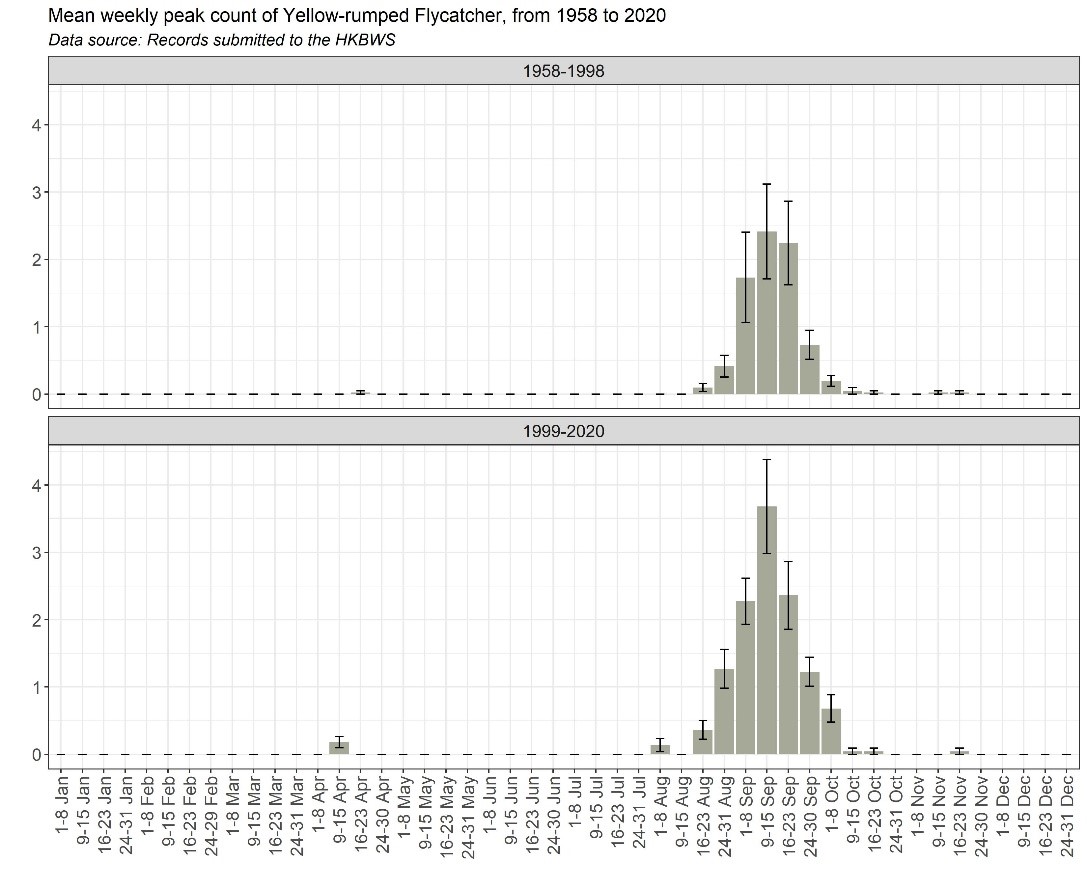
Figure 2.
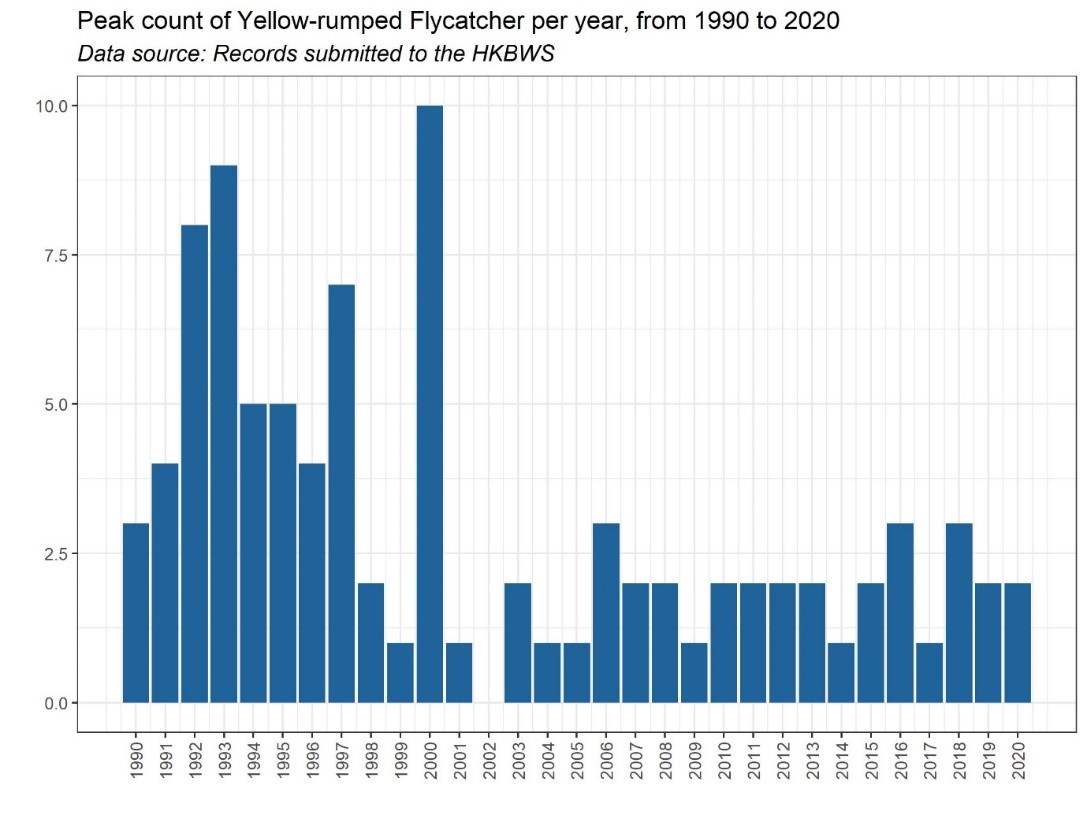
Cheng, T. H. (1987). A Synopsis of the Avifauna of China. Science Press, Beijing.
Clement, P. and E. de Juana (2020). Yellow-rumped Flycatcher (Ficedula zanthopygia), version 1.0. In Birds of the World (J. del Hoyo, A. Elliott, J. Sargatal, D. A. Christie, and E. de Juana, Editors). Cornell Lab of Ornithology, Ithaca, NY, USA. https://doi.org/10.2173/bow.korfly1.01
Dove, R. S. and H. J. Goodhart (1955). Field observations from the Colony of Hong Kong. Ibis 97: 311-340.
Herklots, G.A.C. (1953). Hong Kong Birds. South China Morning Post, Hong Kong.
Walker, F. J. (1958). Field Observations on birds in the Colony of Hong Kong. Hong Kong Bird Watching Society, Hong Kong. (duplicated).
Wells, D. R. (2007). The Birds of the Thai-Malay Peninsula. Vol. 2. Passerines. Helm, London.

